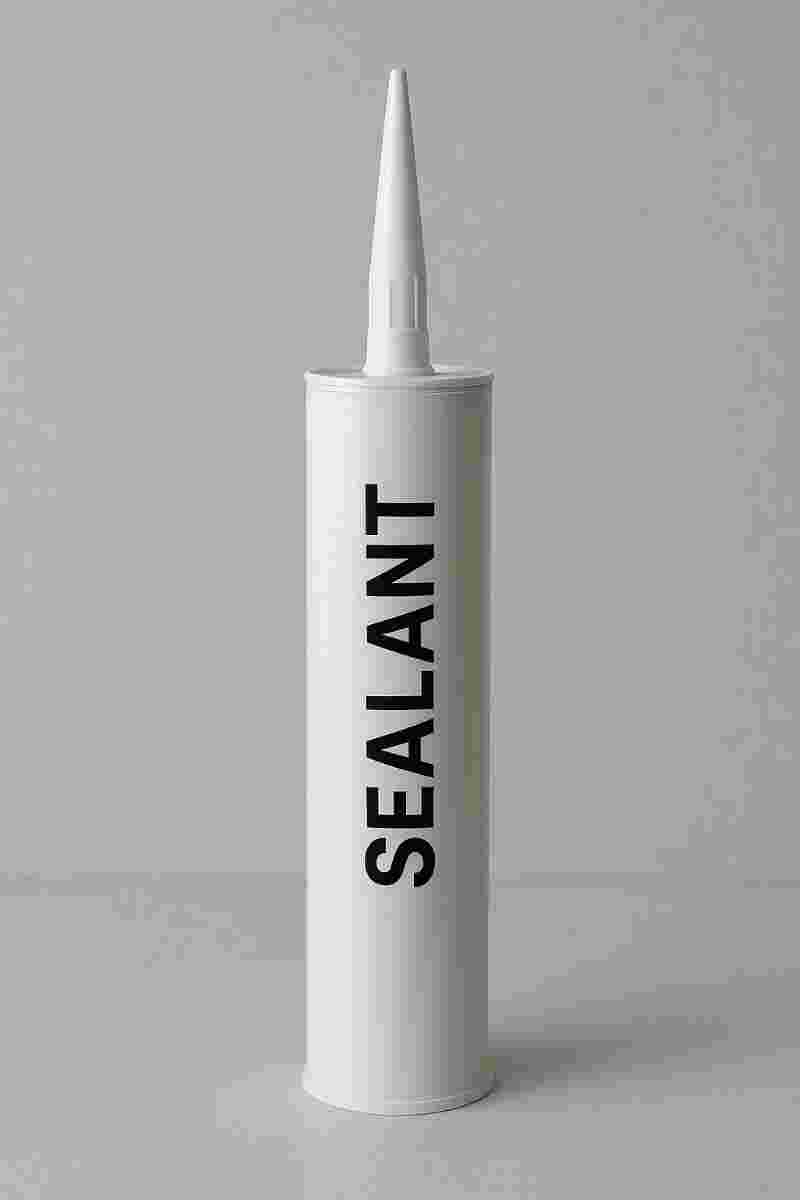Last Updated on August 5, 2025 by Admin
When it comes to construction and home improvement projects, choosing the right sealing material can make the difference between a long-lasting repair and a costly failure. While the terms “mastic” and “sealant” are often used interchangeably in the construction industry, understanding their specific differences is crucial for selecting the appropriate product for your project.
Table of Contents
What Is the Fundamental Difference Between Mastic and Sealant?
The key distinction: All mastics are sealants, but not all sealants are mastics. Mastic is a specialized type of sealant characterized by its ability to remain flexible after curing, making it ideal for applications where joint movement is expected.
Defining Sealants
A sealant is a broad category of materials designed to fill gaps between substrates and create protective barriers. According to ASTM standards, sealants are used for sealing, caulking, or glazing operations in building construction, and they serve three primary functions:
- Gap filling: Sealing openings between different building materials
- Barrier creation: Preventing air, water, and moisture infiltration
- Long-term performance: Maintaining effectiveness throughout their expected service life
Understanding Mastic Properties
Mastic sealants are typically made from oil-based polymer compounds that provide excellent adhesion and flexibility. Their defining characteristic is remaining elastic after curing, which allows them to accommodate structural movement without cracking or debonding.
Types of Sealants Available in 2025
The sealant market has evolved significantly, offering various formulations for specific applications. The most common are silicone, polysulphide, acrylic, waterproof, fire-resistant, and epoxy. Sealant companies produce the product in many forms, including liquid, powder, solid, and foam.

Silicone Sealants
Silicone remains the most popular choice due to its versatility, with high-quality products lasting 30-40 years when properly applied. Benefits include:
- Superior UV resistance
- Excellent temperature stability (-65°F to 400°F)
- Outstanding adhesion to glass, metal, and masonry
- Minimal shrinkage over time
Polyurethane Sealants
Ideal for high-movement joints, polyurethane sealants offer:
- Superior tear resistance
- Excellent abrasion resistance
- Paintable surface when cured
- Good chemical resistance
Acrylic Sealants
Water-based formulations are perfect for interior applications:
- Easy cleanup with water
- Paintable immediately after application
- Low odor
- Cost-effective for basic sealing needs
Modified Silane (MS Polymer) Sealants
MS Polymer sealants combine the best properties of silicone and polyurethane, offering superior adhesion and durability:
- Excellent adhesion without primers
- Can be painted when cured
- No solvents or isocyanates
- Superior mechanical properties
Mastic Applications and Performance Characteristics
Primary Uses for Mastic Sealants
HVAC Systems: Mastic is widely used in heating and air conditioning systems for sealing ductwork due to its flexible properties and ability to fill irregular gaps. Unlike tape, mastic conforms to any shape and creates an airtight seal.
Building Envelope Sealing:
- Window and door perimeters
- Expansion joints in masonry
- Panel joints in curtain wall systems
- Roof membrane sealing
Marine and Automotive Applications: Mastic’s flexibility makes it ideal for vehicles and boats where surfaces constantly expand and contract due to temperature changes and movement.

Performance Specifications
Modern mastic sealants must meet stringent industry standards:
- Movement Capability: ASTM C920 specifies movement classes ranging from 12.5% to 100% of joint width
- Service Life: Typical mastic sealants provide 5-10 years of reliable service before reapplication
- Temperature Range: Most formulations perform from -40°F to +200°F
- Adhesion Strength: Must maintain bond strength after weathering cycles
Installation Best Practices for Optimal Performance
Surface Preparation Requirements
Successful sealant application depends on proper substrate preparation:
- Cleaning: Remove all dirt, oil, old sealant, and loose materials
- Drying: Ensure surfaces are completely dry before application
- Priming: Apply appropriate primer when specified by the manufacturer or when working with porous substrates
Application Techniques
Joint Design Considerations:
- Maintain proper width-to-depth ratios (typically 2:1)
- Use appropriate backing material to control sealant depth
- Calculate expected movement to determine proper joint width
Application Methods:
- Use professional-grade caulking guns for a consistent bead size
- Apply in continuous motion to avoid air entrapment
- Tool the surface within skin over time for optimal adhesion
Common Mistakes to Avoid
Improper Product Selection
Not all sealants are suitable for all applications and substrates. Common errors include:
- Using interior-grade products for exterior applications
- Selecting incompatible sealants for specific substrates
- Ignoring movement requirements
Installation Errors
Poor workmanship represents the single largest factor in sealant joint failure:
- Inadequate surface preparation
- Incorrect joint sizing
- Application in unsuitable weather conditions
- Insufficient curing time before exposure
Industry Standards and Compliance
ASTM Standards for Construction Sealants
The American Society for Testing and Materials (ASTM) maintains comprehensive standards for construction sealants:
- ASTM C920: Standard specification for elastomeric joint sealants
- ASTM C1193: Guide for joint sealant use
- ASTM C1472: Guide for calculating movement and joint width
- ASTM C834: Specification for latex sealants
Building Code Requirements
Modern building codes increasingly reference performance-based standards rather than prescriptive materials, emphasizing:
- Air barrier continuity
- Water infiltration resistance
- Thermal movement accommodation
- Long-term durability
Environmental Considerations and Sustainability
Low-VOC Formulations
Contemporary sealant formulations prioritize reduced volatile organic compound (VOC) emissions to meet environmental regulations and improve indoor air quality.
Energy Efficiency Impact
Proper sealant selection and installation significantly impacts building energy performance:
- Reduces air leakage by up to 50%
- Improves HVAC system efficiency
- Contributes to green building certification
Cost Considerations and ROI
Initial Investment vs. Long-Term Value
While premium sealants cost more initially, they provide better value through:
- Extended service life (20-40 years vs. 5-10 years)
- Reduced maintenance requirements
- Better energy performance
- Lower lifecycle costs
Project-Specific Economics
Consider these factors when evaluating sealant options:
- Accessibility for future maintenance
- Expected building service life
- Environmental exposure conditions
- Performance requirements
Future Trends in Sealant Technology
Smart Sealants
Emerging technologies include:
- Self-healing formulations
- Color-changing indicators for maintenance timing
- Enhanced UV resistance through nanotechnology
Sustainable Materials
Industry focus on:
- Bio-based raw materials
- Recyclable packaging
- Extended service life formulations
Conclusion
Understanding the distinction between mastic and other sealant types is essential for successful construction and maintenance projects. While mastic represents a specific category of flexible sealants ideal for movement-prone applications, the broader sealant category offers solutions for virtually every sealing challenge.
Success depends on matching the right product to your specific requirements, considering factors like joint movement, environmental exposure, substrate compatibility, and performance expectations. When in doubt, consult with sealant manufacturers or construction professionals to ensure optimal product selection and installation practices.
For complex applications or critical building envelope sealing, consider working with certified applicators who understand the nuances of different sealant technologies and can ensure proper installation for maximum performance and longevity.
For more construction industry insights and best practices, explore our related articles on construction material specifications, building envelope performance, and construction career opportunities.
Frequently Asked Questions
While mastic sealants are versatile, they’re specifically designed for applications requiring flexibility. Mastic works best when applied thickly and isn’t recommended for thin applications or areas with excessive joint movement.
Consider these factors:
Joint movement: High movement requires elastomeric sealants
Substrate materials: Some combinations require specific formulations
Environmental exposure: UV, temperature, and chemical resistance needs
Service life requirements: Match sealant durability to building expectations
Structural sealants like those meeting ASTM C1184 are designed to transfer loads between building components, while non-structural sealants provide only weatherproofing.
Sealant inspection should occur annually, with replacement typically needed every 5-20 years depending on product type and environmental conditions.
Compatibility between different sealant chemistries varies. Always consult manufacturer guidelines and consider potential interactions that could affect performance.


